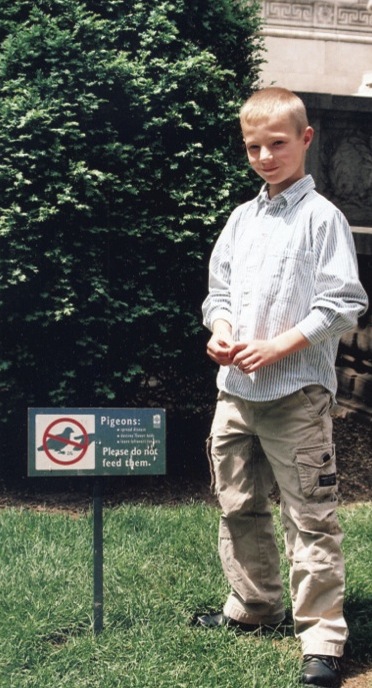Several years ago we were in New York City attending the ordination of a friend of mine, a red-headed Ontarian who is now called Fr. Juan Diego and belongs to the Franciscan Friars of the Renewal. These friars are the modern embodiment of St. Francis himself. The ordination took place at St. Patrick’s Cathedral, and there were seven friars ordained along with seven diocesan priests. Inside the entryway of the Cathedral on the floor there is a beautiful large tiled mosaic with white doves with some verse about Peace (I cannot recall the exact phrase) surrounding it. The sentiment expressed is an encouraging one for it is one of the last things seen when leaving after Mass, a reminder that one is going into the world for a purpose.
Being among the friars, one is struck by how young they all are—it is an order of bearded and sandaled twenty-year-olds, with some grey-beards distributed among them. Meeting them, one learns who St. Francis was by meeting his followers, and what that first band of friars must have been like. There were lots of things that were wonderful about that trip, not least of which was the party in the Bronx afterwards. Like any Catholic event, there was lots of good food and beer and especially lots of children of all ages running around and playing tag.
We had some time to spend in New York City, and we spent it like the hicks we are. After the ordination, we spread out a blanket and picnicked on the Cathedral lawn. Then we walked the sidewalks of Manhattan looking up at sights we had only read about or seen in the movies. On the corners were beggars, people selling watches and hats, and people walking blithely through the traffic as if through a hayfield. The most fun we had was riding the wooden escalators at the Macy’s Department Store—we just kept going up and down, past the enticements to spend money.
During our walks, we came across a grand building that looked like a temple of some sort. This was the Carnegie Library, complete with large imposing stone pillars, stone steps, and an expansive lawn surrounding it. Unlike the lawn at St. Patrick’s Cathedral, at the library the grass was roped off, making it useless grass since there would be no feet to enjoy it or children to play on it. But what was most amazing were the signs all over the lawn:
“Pigeons spread disease, destroy flower beds, leave leftovers for rats. Please do not feed them.”
The other name for a pigeon is rock dove, and a rock dove is just a type of dove that has learned to live with us in our concrete cities. The sign admonishing us to not feed the city doves that surrounded us was lying, for feeding pigeons does not spread any disease. It takes a special kind of killjoy mentality to erect signs telling people not to feed doves, the same kind of mind that replaces holy water fonts with hand sanitizer. If there were sound medical reasons for not feeding doves, then every city in the world would be rife with such diseases.
But even if one could get sick from feeding doves, why is it that feeding doves on the Carnegie Library lawn is more dangerous than feeding doves in the rest of the city? If city doves are agents of pestilence and plague, then surely more signs are needed, to be erected on all the lawns of the city. The Carnegie Library executives and librarians may not realize this—not being trained as ornithologists—but pigeons can fly.
It is not the threat of disease that is the problem here, but the fact of the city doves or pigeons themselves. The obvious worry is that the combination of pigeons and a lawn will attract children, children to feed them, children who might step over the ropes and perhaps play tag on that lawn. That is the real risk, that kids might enjoy themselves playing innocent games.
It is no accident that the Catholic Church is pro-life, nor that St. Patrick’s Cathedral links doves with peace and the Holy Spirit, not disease. And it is no accident that the sons of St. Francis are friends of doves and children.


